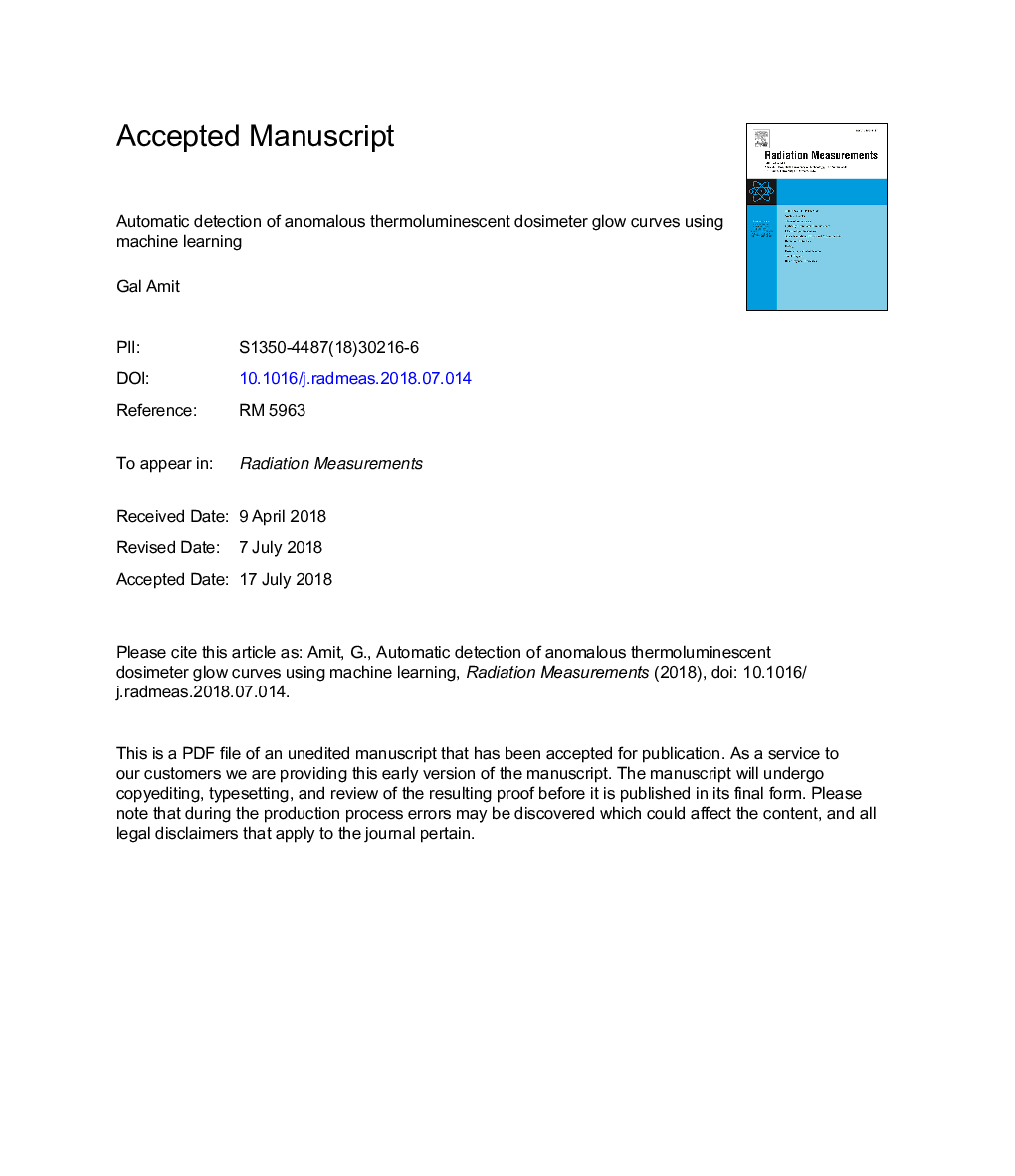| Article ID | Journal | Published Year | Pages | File Type |
|---|---|---|---|---|
| 9953957 | Radiation Measurements | 2018 | 8 Pages |
Abstract
Computerized Glow Curve Analysis (CGCA) has been, and still is, an intensively-investigated subject for the past two decades. CGCA has applied different methods for various applications, from glow curve deconvolution into isolated peaks, through semi-automatic software tools for detecting outliers, to software that discovers exceptional curves by using predefined rules. The method presented herein addresses the subject using a new approach in which a completely automatic algorithm is used for the accurate detection of anomalies in thermoluminescent dosimeter (TLD) glow curves. A Support Vector Machines (SVM) technique, which is a machine learning classification algorithm, is used for the first time for radiation dosimetry applications. The algorithm classifies glow curves into two categories: an acceptable i.e. 'regular' curve, or a curve that exhibits any kind of anomaly i.e. an 'anomalous' curve. The classification method treats the glow curves raw data as a large ensemble of statistical data, and tries to identify exceptional glow curve shapes by statistical means. This classification method is performed in three steps. First, a library of glow curves is manually classified by a human user of the system into the above two classes. Then an iterative training algorithm is applied to these glow curves. The final stage applies a method of comparison between an unidentified glow curve and these two pre-classified sets, and assesses a classification probability to each of the two classes. The results show between 96.2% and 97.7% accuracy of the correct classification to either one of the classes, depending on the admissible false negatives rate.
Related Topics
Physical Sciences and Engineering
Physics and Astronomy
Radiation
Authors
Gal Amit, Hanan Datz,
